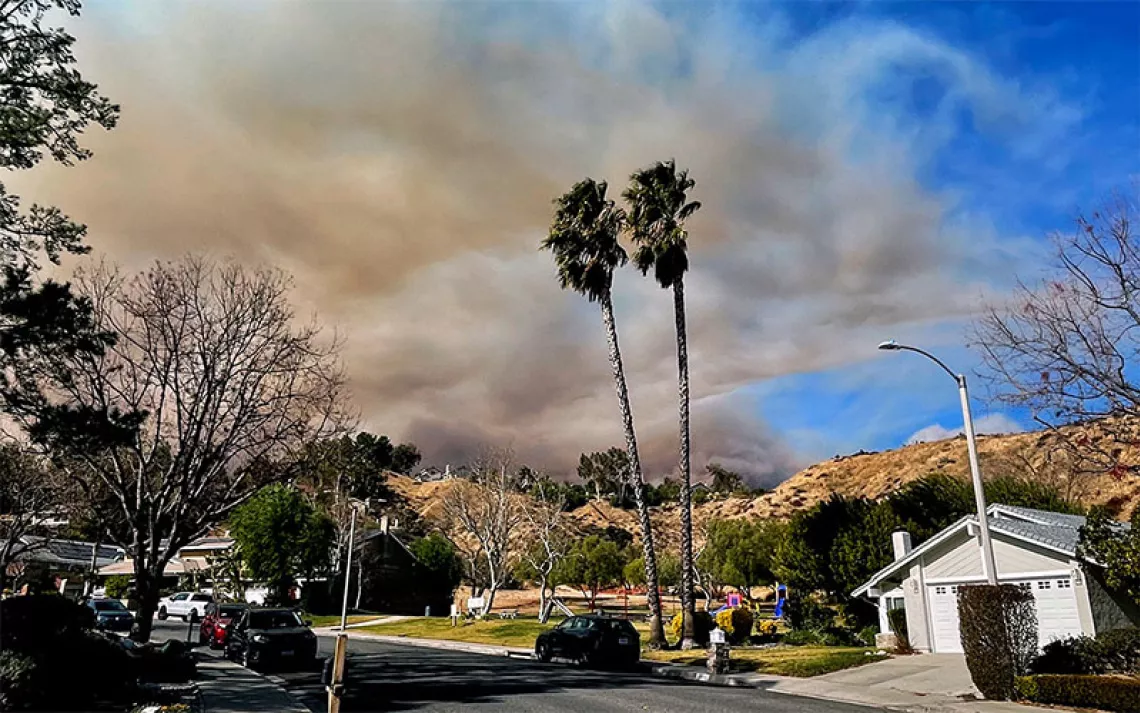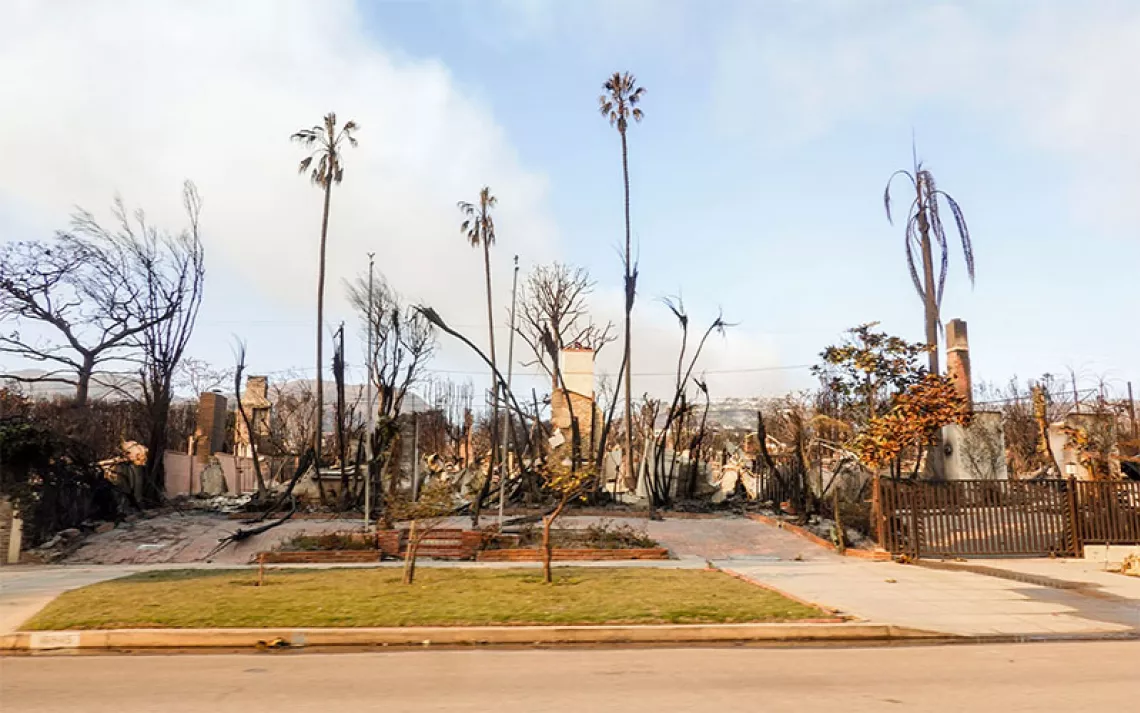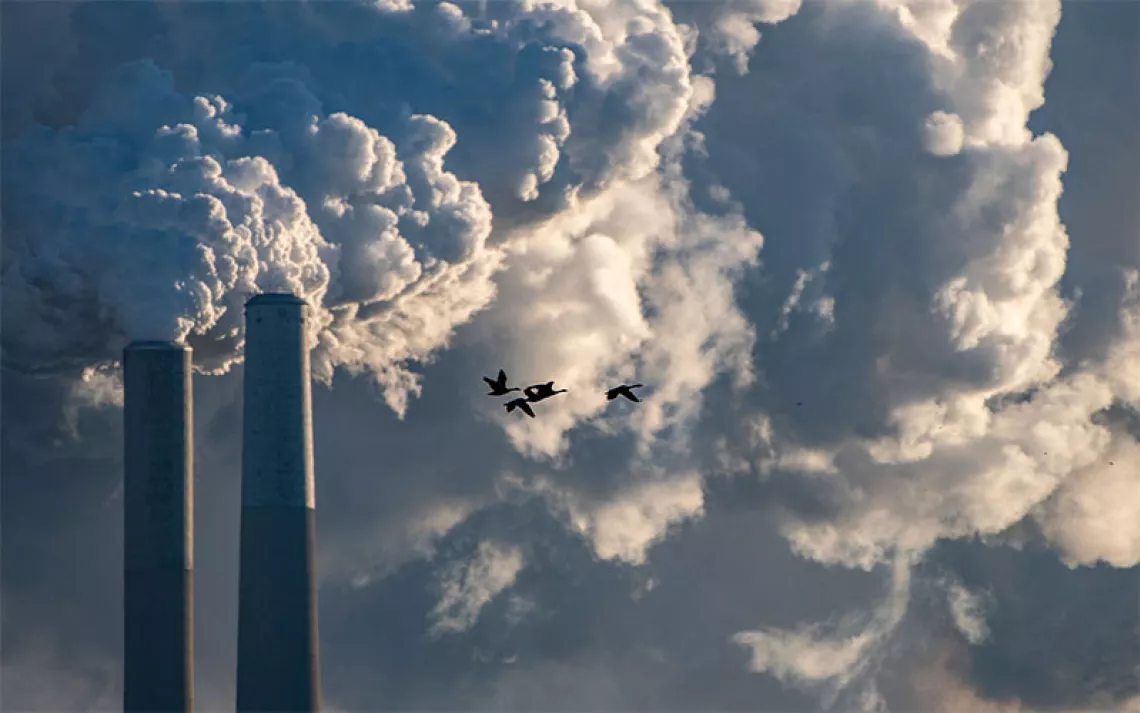Will Climate Justice Be Served?
US appeals court dismisses Our Children’s Trust case

People gather around a televised livestream in Director Park as the Juliana v. United States lawsuit begins. | Photo by Alex Milan/Sipa USA/Sipa via AP Images
Last week, the US Court of Appeals for the Ninth Circuit dismissed the landmark youth climate lawsuit, Juliana et al. v. United States et al., and in a 2-to-1 opinion concluded that the youth plaintiffs lack standing to sue the federal government for fueling global warming. While the legal saga isn’t over yet—the plaintiffs’ attorneys say they will file a petition for an en banc hearing, which requires half of the appellate court’s 29 judges to agree to hear the case by an expanded 11-judge panel—the decision nevertheless represents a setback for efforts to use the courts as a venue for addressing climate change. Since the case was filed by 21 youth plaintiffs in 2015, the lawsuit has been closely watched as a test case for whether judges are willing to tackle the threat of rising greenhouse gas emissions. For now, at least, the answer appears to be no.
Attorneys for the plaintiffs were naturally disappointed with the decision. “We consider it to be an abdication of judicial responsibility,” says Andrea Rodgers, a staff attorney for Our Children’s Trust, the nonprofit that organized the lawsuit.
Other observers, however, felt that the appellate courts had acted wisely in dismissing the case. James Huffman, a professor at Lewis & Clark Law School and a fellow at the conservative Heritage Foundation, wrote in an email, “I think the outcome is correct. It is not a matter for the courts. They have neither the authority nor the competence” to do what the plaintiffs requested.
In their lawsuit, the plaintiffs asked the federal government to stop contributing to climate change and to develop a plan to remediate the damages the plaintiffs have suffered due to unchecked greenhouse gas emissions. The court should do this, the plaintiffs argued, to protect the health and welfare of young people and future generations—a duty courts have recognized in prior cases.
But two of the three judges felt that this demand exceeded the powers of the judiciary. Anybody who appeals to the courts for redress has to demonstrate three things: that she has been injured; that there are enough facts to determine whether the injury has been at least partly caused by an identifiable entity; and that a favorable ruling by the court will remedy the injury. While the appellate judges acknowledged that the plaintiffs had made a strong case in showing injury by federal actions, they concluded that the courts lack the ability to deliver to the young plaintiffs the relief they were asking for.
In his majority opinion, Judge Andrew D. Hurwitz wrote, “The [legal] record left little basis for denying that climate change was occurring at an increasingly rapid pace,” and went on to acknowledge that “the record conclusively established that the federal government has long understood the risks of fossil fuel use and increasing carbon dioxide emissions; and the record established that the government’s contribution to climate change was not simply a result of inaction.” But even as Judge Hurwitz name-dropped the 1964 hit song “Eve of Destruction” (sample lyrics: “I can't twist the truth, it knows no regulation/Handful of Senators don't pass legislation”), he maintained that “the plaintiffs' impressive case for redress must be presented to the political branches of government." No matter how badly the other two branches of government have failed to remediate the problem, the opinion says, the courts do not have “the ability to step into their shoes.”
Both the Trump administration and, before it, the Obama administration, had fought the suit, and in a statement the Justice Department said it was pleased with the outcome. “As the Court recognized, Article III of the Constitution’s standing requirement is a vital limitation on the power of the federal courts, and this suit fell squarely outside the parameters of Article III.”
But the plaintiffs took a measure of consolation from a blistering dissent by Judge Josephine L. Staton, who wrote that “as described by plaintiffs’ experts, the injuries experienced by plaintiffs are the first small wave in an oncoming tsunami—now visible on the horizon of the not-so-distant future—that will destroy the United States as we currently know it.” She argued that the “perpetuity of the Republic” is the “guardian of all other rights,” so whatever truncates the existence of the United States also violates other guaranteed rights.
Citing previous cases, Staton observed that the Constitution’s protection of the right to life, liberty, free speech, a free press, and freedom of worship and assembly “may not be submitted to vote; they depend on the outcome of no elections.” These rights also extend to posterity, Staton wrote, adding, “When fundamental rights are at stake, individuals ‘need not await legislative action,’” citing Obergefell v. Hodges, the 2015 Supreme Court case enabling gay marriage. Making the plaintiffs wait for the political branches to remedy their injuries will be just like telling them they have no recourse at all, in Staton’s view.
The powerful dissent and what the plaintiffs' attorneys describe as an apparent “tension” in the majority opinion itself leave the plaintiffs cautiously optimistic that they may be able to get a second appeal with a larger panel of judges. Nathan Baring, a 20-year-old plaintiff from Alaska, says he is “far more optimistic” about the outcome than media portrayals of the ruling have been. “If the court affirms all of these points that we’ve made, that there is a systemic harm being done to us and our generation, we believe the court does absolutely have a role to play,” Baring says. And in an en banc hearing, he says, “we believe we can show that.”
Mary Christina Wood—a law professor at the University of Oregon whose ideas about the “public trust doctrine” have served as a kind of intellectual inspiration for the youth lawsuit—also sees encouraging signs in the majority and dissenting opinions. “You have three judges agreeing that this is an all-out emergency caused by the federal government,” she says.
“Even without a trial, they felt it necessary to call out the gravity of the situation. So that’s a big deal.” Wood also notes that the panel squarely rejected the federal government’s argument that climate cases should be conducted under the Administrative Procedure Act. “This case broke out of that framing that has characterized environmental law for decades,” she says.
Dissenting opinions, though not controlling, are often used to powerful effect in ensuing cases, so Staton’s dissent may have long legs within the judiciary. It will also, Wood says, be of great interest internationally and could help propel forward the public conversation about climate.
“Judge Staton leaves no room for judges to waffle anymore,” Wood says. “Her opinion is so filled with the moral consequences of inaction that it is making judges have to choose sides. The bottom line is the judges’ own personal sense of their responsibility in their appointed office. That’s what it’s going to come down to.”
 The Magazine of The Sierra Club
The Magazine of The Sierra Club



